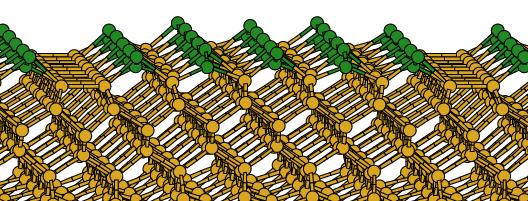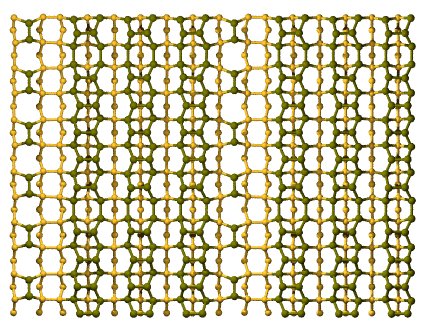| Research |
| Teaching |
| Publications |
| DensEl |
| ParaDens |
| Conquest |
| Links |
| Home |
Heteroepitaxial growth of Ge on Si(001) is extremely important for at least two reasons: first, it has great potential as a substrate for new, high frequency semiconductor devices, while remaining compatible with existing Group IV technology; and second, it is a prototypical system for studying strained Stranski-Krastanow growth.

We are studying this growth using electronic structure techniques. A well-defined series of reconstructions results as increasing amounts of Ge is deposited on the Si(001) surface, which increases the strain. Our studies are broken down into several areas:
The (2xn) reconstruction for sub-monolayer coverages.
This work used ab initio density functional calculations, and has been published in Surface Science (vol. 515, p. 483). It is available as a preprint in either gzipped postscript or PDF. An example of this system is illustrated above for n=6.
Multilayer growth of Ge on Si(001): the (MxN) reconstruction.
This work used tight binding calculations (using the DensEl code), validated against the earlier ab initio work. It has been accepted for publication in Surface Science, and is available as a preprint in either gzipped postscript or PDF. An example of the results is shown below in three different views: from above, from the front (i.e. looking up the page in the first picture) and from the side (i.e. looking across the page in the first picture).
The step roughness reversal seen with Ge on Si(001).
The Si(001) surface has two kinds of step (A-type, which is parallel to the underlying dimer rows and B-type, which is perpendicular to the dimer rows). The A-type steps are generally very straight, while the B-type steps are often kinked. When Ge is added, this roughness reverses, and eventually steps form along the elastically soft (100) and (010) directions, just prior to the formation of "hut" clusters. We are investigating these processes with tight binding.
Top

Front

Side
